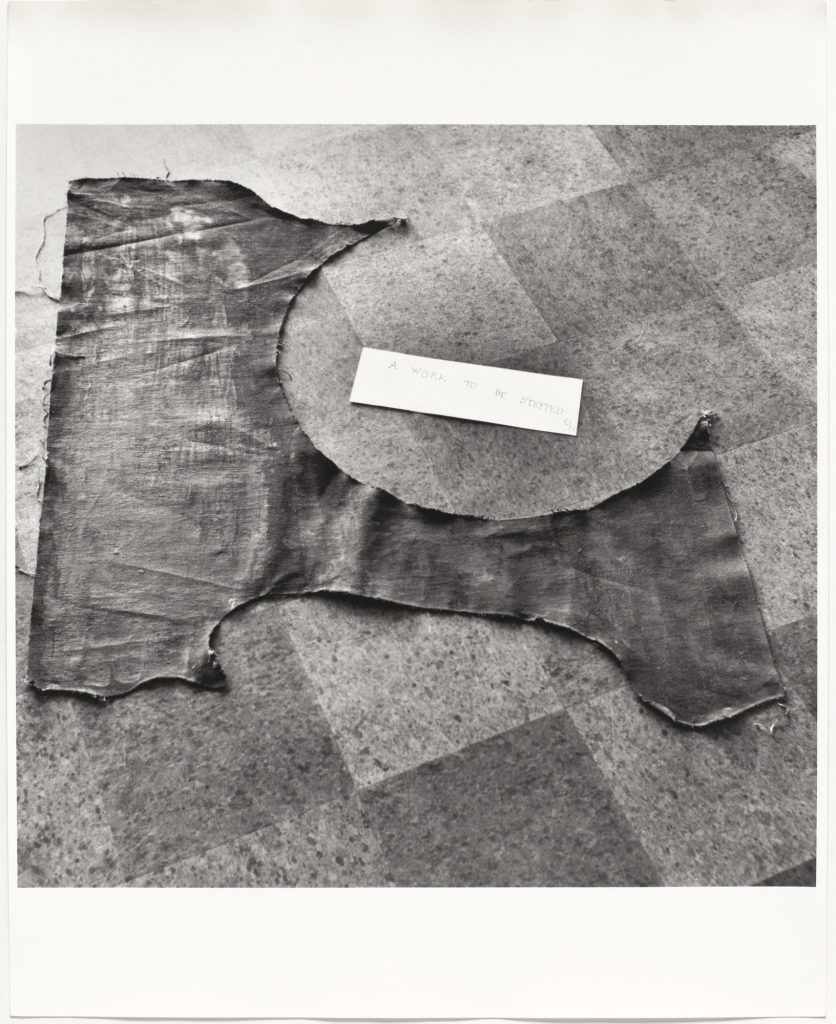
Yoko Ono, “Painting to be Stepped On” (1960)
Directions:
“Leave a piece of canvas or finished painting on the floor or street.”
Variation for the classroom:
Consider Painting to be Stepped On by Yoko Ono, which states, “Leave a piece of canvas or finished painting on the floor or street.”
- Find a piece of canvas, paper, or a painting, photograph, etc. that you will collect foot prints on.
- Locate a high-traffic area to place the item. For example a doorway, etc.
- Allow passersby to step on the item for a predetermined amount of time.
- Display the work.
- Discuss the role of chance in its creation.
History [credit]:
“Narrator: In July 1961, George Maciunas, an architect, designer, and co-director of the AG Gallery offered Ono her first solo show.
Yoko Ono: And I said, oh my god, this is the first time somebody wanted to do my show. I went to an Army surplus shop. There was a rolled canvas – it was just in a corner. I said could I buy this? He said – sure. And I went home to the loft, and I started to cut pieces.
And I just felt so good about it because I never thought I wanted to do it, like, you know, stretch the canvas. I thought that was rather contrived, and everybody was doing that.
So I kept cutting, and, when I wanted to do Painting to Be Stepped On, I didn’t have enough canvas. So then I realized that after I did Water Painting, and after cutting the circle, there was a kind of strange shape that was you know, remaining there. I said, well, this will be a Painting to Be Stepped On, why not?
And I thought that was beautiful, you know, different kind of beauty. And the fact that each one had a function that was totally different from each other, and that, too, I thought was very important.
So it was a very strange show. It’s right in the middle of the summer and was very hot in New York. I think the first opening, five people came. One was John Cage, one was Isamu Noguchi. And whenever they came, I started to explain what the function of each painting was.
And I thought, well, I can’t do that. I just have to have something written, you know? Each one had an instructions.
I just wanted to make those things. And I wasn’t thinking how many people saw it or, you know, that kind of thing. In other words, there was a certain pride in what I did, for myself.”